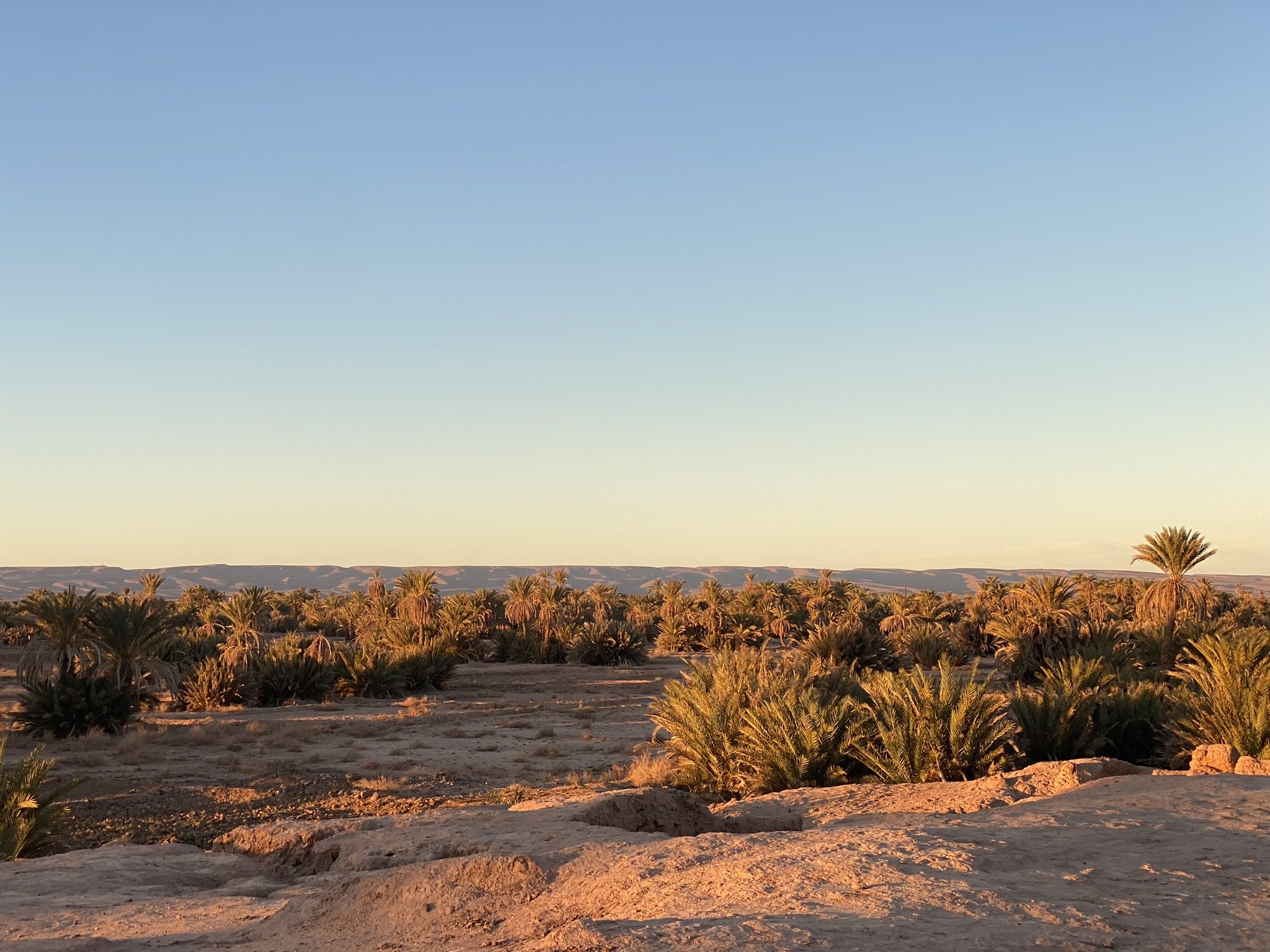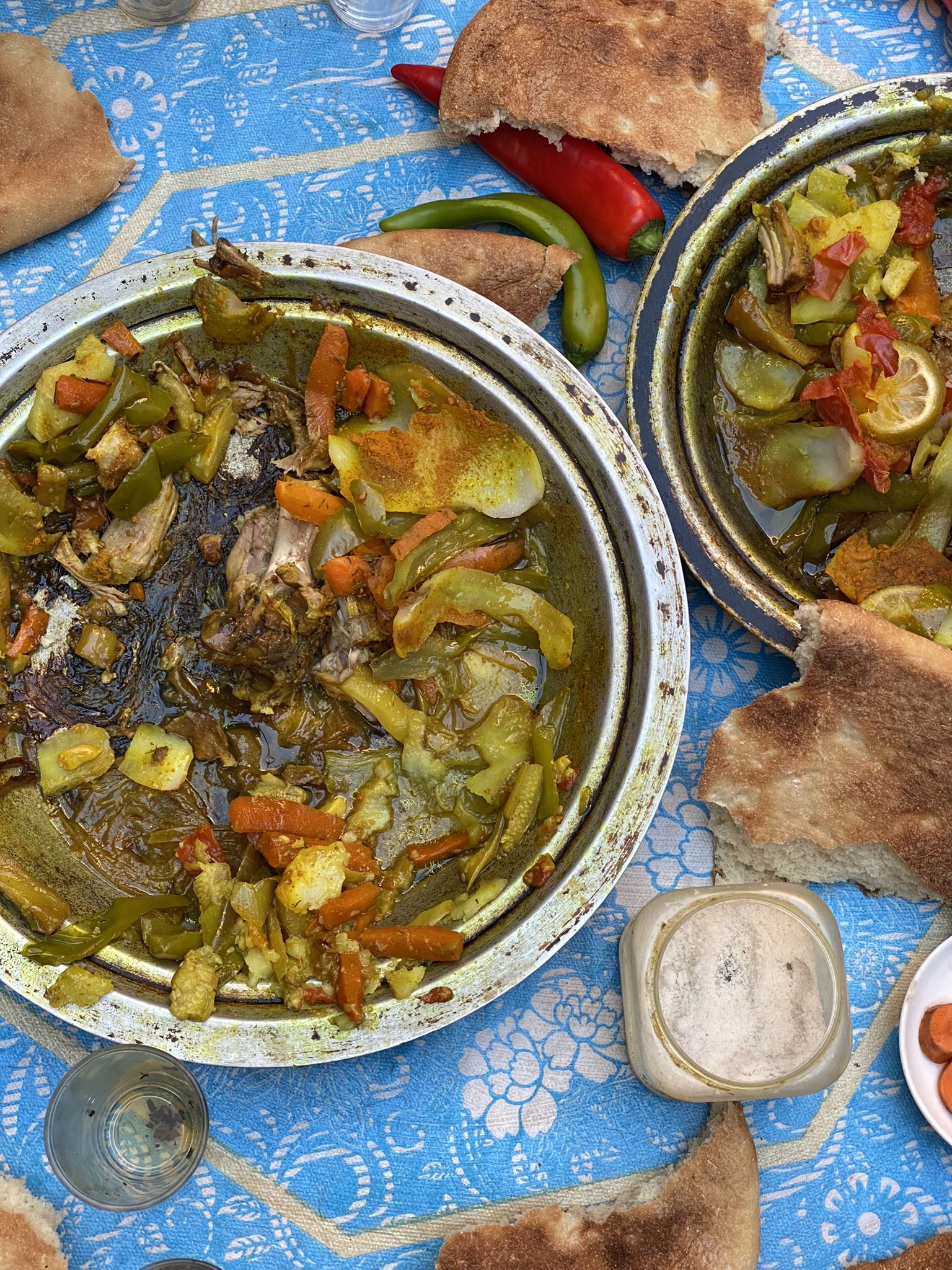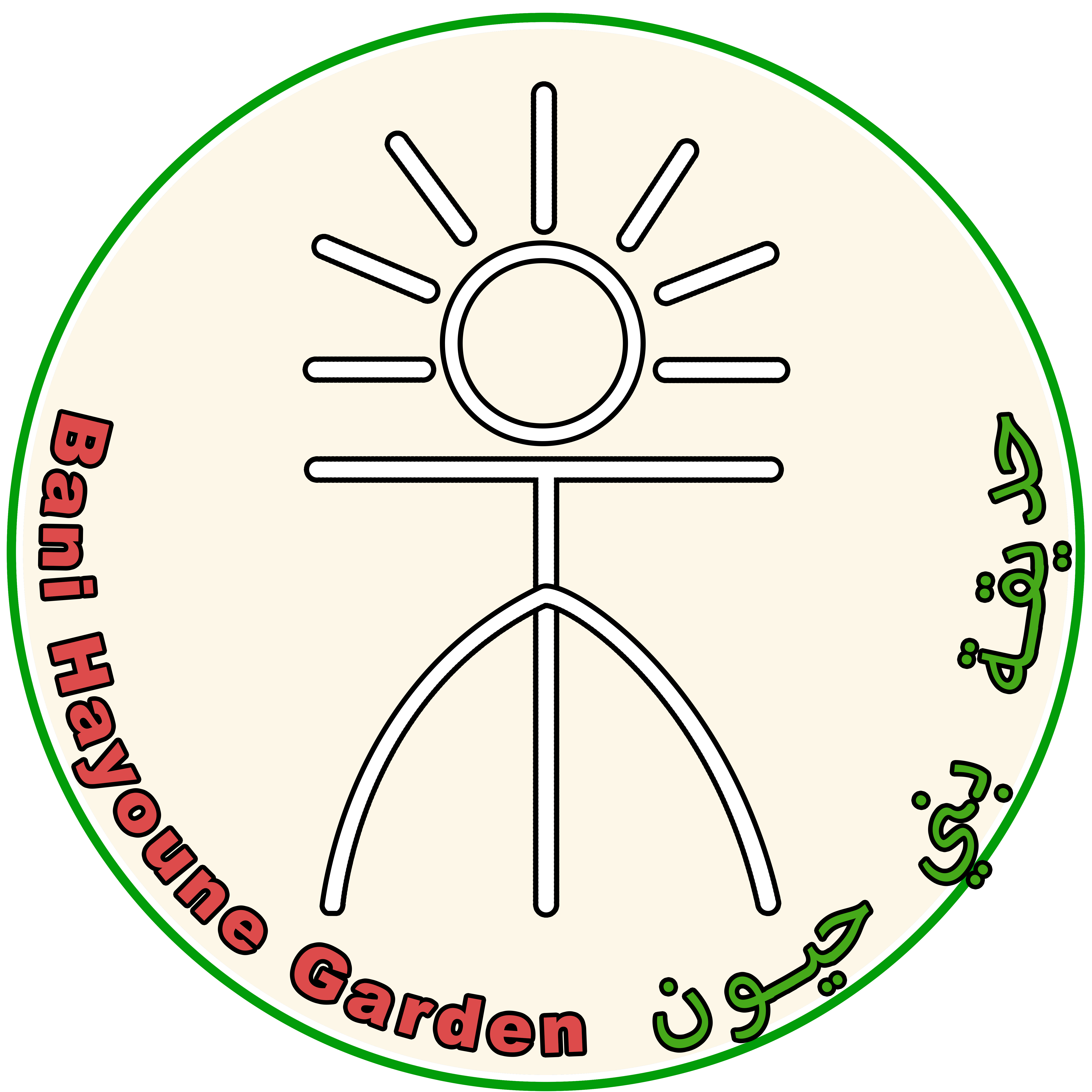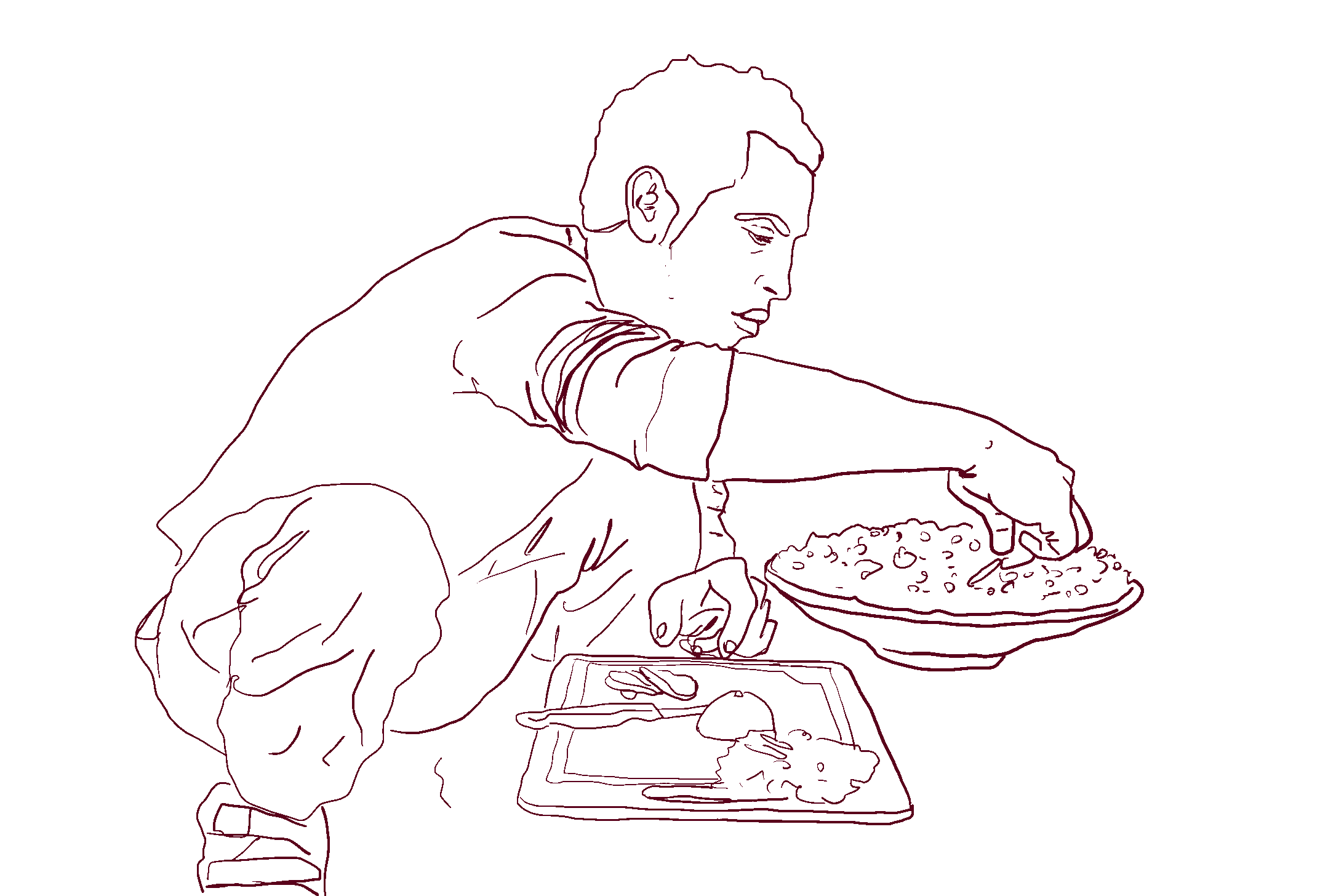BLOG
A blog by The Flavour Narratives, written by Rachel Hobley
3rd of February 2024
It's one o'clock in the afternoon in Bani Hayoune near the Sahara. The winter desert heat is peaking. I hear Said shout to Alex to turn on the water pump - they're re-filling the barrel that feeds the house from a reserve that sits in a deep pit outside.
"Here, water is king," as Said puts it. Every drop is used twice. Once to shower, twice to flush the loo. First to boil eggs, then to rinse vegetables. Begin with washing dishes, take it to water the plants.
 Palms that have benefitted from water saved at Said and Linde’s home, photo by Rachel Hobley
Palms that have benefitted from water saved at Said and Linde’s home, photo by Rachel Hobley
Said and Linde moved into their 200 year old home in Bani Hayoune in 2019. Since then, they have been working to bring this oasis back to life, but it's a big task.
As workawayers, we are here not only to help keep life ticking over, but to learn. As Said and Alex fight with the pump, I'm pulling weeds from the cracked land and laying them out to dry in the sun. Stored by the house, it will be food for the animals when summer comes. We process dates and sift sand to make bricks.
 Sorting dates, photo by Linde de Greeff
Sorting dates, photo by Linde de Greeff
The crust of the land is salty, a reminder of the sea that once covered the area. Where there are wells, they have to be monumentally deep, dug with skill and hard to come by machinery.
Instead, this community at the south of Morocco rely on water released from two reservoirs further up the Daraa valley. The first was built in the 1970s to capture the water that tips off of the Atlas Mountains when the snow melts. Then in the 2010s, the Ouarzazate Solar Power Station opened, and with it another reservoir. As the world's largest concentrated solar power plant, it marked a new chapter in sustainable power for Morocco.
The repercussions, though, are felt all along the valley.
Whilst making the most of the sun, this solar plant takes a considerable amount of water to run, enough to cool the plant in a place that feels the sun 365 days a year. Only the remainder is released once or twice a year to quench the land that lies in the south.
 The land behind the house, looking towards the hills, photo by Rachel Hobley
The land behind the house, looking towards the hills, photo by Rachel Hobley
As we take Sou-Sen, Said and Linde's dog, for a walk in the evening setting sun, we trace the route of concrete walled canals. A metre wide, these sluice controlled water ways bring the water from the reservoirs to people's land.
Village elders and tribal leaders create a timetable of who can open their sluice when, and for how long, relative to the needs of each home. They'll measure the water flow, adjusting each slot as the water dwindles.
Diverted into deep plastic lined pits, this becomes water for washing and cleaning. Undrinkable, but precious.
 The tell tale sign of past volunteers, photo by Rachel Hobley
The tell tale sign of past volunteers, photo by Rachel Hobley
I step from the sun into the house. Bamboo shoots bound together to form a make shift roof dissipate the sun. The warmth from my skin fights the cool of the shade.
Linde’s in the kitchen, preparing lunch. The metal tagine is on the largest of the gas hob rings. Round slices of onion sizzle in the heat of sunflower oil. Linde turns a potato in the leftover boiled egg water, washing the last of the mud from its peeled skin.
‘Can I help?’ I ask
‘Yeah of course!’ she hands me the next potato with a small knife. I slice down its length, placing it into the tagine, leant up against the half chicken in the middle. Then salt, sliced courgettes, sometimes green peppers, lots of whole garlic cloves. And turmeric.
Lid on, low heat.
I cook with Linde most days that we stay with them. The kitchen is small, the walls made of the same earth bricks and render of the rest of the house. The cats keep us company, passing their dusty feet across the concrete work surface.
It’s my chance to chat with Linde, learn more about life in this place. A gentle, quiet creative, Linde answers every question I throw at her. How was moving here from the Netherlands? What was life like during covid? How do you get a break?
 The kitchen, with one of the youngest workawayers, photo by Linde de Greeff
The kitchen, with one of the youngest workawayers, photo by Linde de Greeff
She teaches me about the place of respect in the community, the importance of honour to be recognised and accepted. Sometimes Said will be gone until the early hours of the morning, his social standing in the community drawing him increasingly in to new responsibilities.
Linde will cook the food he loves best nonetheless - lentils, tagine, chicken.
It wasn’t always like this for Said. Growing up a nomad, his Tuareg heritage kept him in the desert with his family until his teenage years, when they settled in Tagounite.
The pressures faced by these groups have led to increasing numbers settling in the area, but with the water issues and a lack of resources and services, most are moving on to elsewhere, seeking other opportunities. I mentally store my questions about this, waiting for a planned trip to the dunes to learn more.
Said and Linde’s work in Bani Hayoune is seeking to overcome the issues that these families face. It’s hard, for example, to find organic produce here.
With water so scarce, most fruit and vegetables are transported from the north, not grown locally, reducing the choice on offer. With efficient and reliable irrigation, produce could be grown on their land.
 Photo by Rachel Hobley
Photo by Rachel Hobley
Once the tagine's been on the hob for an hour or so it’s ready, onion base caramelised, some parts tangy with preserved lemon. We place it in the middle of the table with salt and hot peppers, use bread to scoop and soak up the sweet juices, tut at the hopeful cats, and talk about the things we have in common - music, films, food (usually cheese).
When we’re home, Alex and I talk about an irony. Morocco works hard to welcome and protect tourists. As a Moroccan, though, it is incredibly hard for Said to get a visa to travel abroad.
Instead, he and Linde open their home to volunteers, bringing the world around their table. Where there is a shortage of water, there is no lack of welcome.
At one point there were 12 of us.
 Lunchtime, with Gru Gru and Mouse to help. Photo by Linde de Greeff
Lunchtime, with Gru Gru and Mouse to help. Photo by Linde de Greeff
There is no ego here. No lauding of knowledge or dramatising of a life lived at an extreme. There is a sharing. Bit by bit, this home is being rebuilt with hands from around the world.
Just as we all carry the sand home in our suitcases and backpacks, so our fingers glow with the turmeric tagine that bought us together.

Source: The Flavour Narratives - by Rachel Hobley
The Flavour Narratives Instagram
Where water is king
A blog by The Flavour Narratives, written by Rachel Hobley
3rd of February 2024
It's one o'clock in the afternoon in Bani Hayoune near the Sahara. The winter desert heat is peaking. I hear Said shout to Alex to turn on the water pump - they're re-filling the barrel that feeds the house from a reserve that sits in a deep pit outside.
"Here, water is king," as Said puts it. Every drop is used twice. Once to shower, twice to flush the loo. First to boil eggs, then to rinse vegetables. Begin with washing dishes, take it to water the plants.
 Palms that have benefitted from water saved at Said and Linde’s home, photo by Rachel Hobley
Palms that have benefitted from water saved at Said and Linde’s home, photo by Rachel HobleySaid and Linde moved into their 200 year old home in Bani Hayoune in 2019. Since then, they have been working to bring this oasis back to life, but it's a big task.
As workawayers, we are here not only to help keep life ticking over, but to learn. As Said and Alex fight with the pump, I'm pulling weeds from the cracked land and laying them out to dry in the sun. Stored by the house, it will be food for the animals when summer comes. We process dates and sift sand to make bricks.
 Sorting dates, photo by Linde de Greeff
Sorting dates, photo by Linde de GreeffThe crust of the land is salty, a reminder of the sea that once covered the area. Where there are wells, they have to be monumentally deep, dug with skill and hard to come by machinery.
Instead, this community at the south of Morocco rely on water released from two reservoirs further up the Daraa valley. The first was built in the 1970s to capture the water that tips off of the Atlas Mountains when the snow melts. Then in the 2010s, the Ouarzazate Solar Power Station opened, and with it another reservoir. As the world's largest concentrated solar power plant, it marked a new chapter in sustainable power for Morocco.
The repercussions, though, are felt all along the valley.
Whilst making the most of the sun, this solar plant takes a considerable amount of water to run, enough to cool the plant in a place that feels the sun 365 days a year. Only the remainder is released once or twice a year to quench the land that lies in the south.
 The land behind the house, looking towards the hills, photo by Rachel Hobley
The land behind the house, looking towards the hills, photo by Rachel HobleyAs we take Sou-Sen, Said and Linde's dog, for a walk in the evening setting sun, we trace the route of concrete walled canals. A metre wide, these sluice controlled water ways bring the water from the reservoirs to people's land.
Village elders and tribal leaders create a timetable of who can open their sluice when, and for how long, relative to the needs of each home. They'll measure the water flow, adjusting each slot as the water dwindles.
Diverted into deep plastic lined pits, this becomes water for washing and cleaning. Undrinkable, but precious.
 The tell tale sign of past volunteers, photo by Rachel Hobley
The tell tale sign of past volunteers, photo by Rachel HobleyI step from the sun into the house. Bamboo shoots bound together to form a make shift roof dissipate the sun. The warmth from my skin fights the cool of the shade.
Linde’s in the kitchen, preparing lunch. The metal tagine is on the largest of the gas hob rings. Round slices of onion sizzle in the heat of sunflower oil. Linde turns a potato in the leftover boiled egg water, washing the last of the mud from its peeled skin.
‘Can I help?’ I ask
‘Yeah of course!’ she hands me the next potato with a small knife. I slice down its length, placing it into the tagine, leant up against the half chicken in the middle. Then salt, sliced courgettes, sometimes green peppers, lots of whole garlic cloves. And turmeric.
Lid on, low heat.
I cook with Linde most days that we stay with them. The kitchen is small, the walls made of the same earth bricks and render of the rest of the house. The cats keep us company, passing their dusty feet across the concrete work surface.
It’s my chance to chat with Linde, learn more about life in this place. A gentle, quiet creative, Linde answers every question I throw at her. How was moving here from the Netherlands? What was life like during covid? How do you get a break?
 The kitchen, with one of the youngest workawayers, photo by Linde de Greeff
The kitchen, with one of the youngest workawayers, photo by Linde de GreeffShe teaches me about the place of respect in the community, the importance of honour to be recognised and accepted. Sometimes Said will be gone until the early hours of the morning, his social standing in the community drawing him increasingly in to new responsibilities.
Linde will cook the food he loves best nonetheless - lentils, tagine, chicken.
It wasn’t always like this for Said. Growing up a nomad, his Tuareg heritage kept him in the desert with his family until his teenage years, when they settled in Tagounite.
The pressures faced by these groups have led to increasing numbers settling in the area, but with the water issues and a lack of resources and services, most are moving on to elsewhere, seeking other opportunities. I mentally store my questions about this, waiting for a planned trip to the dunes to learn more.
Said and Linde’s work in Bani Hayoune is seeking to overcome the issues that these families face. It’s hard, for example, to find organic produce here.
With water so scarce, most fruit and vegetables are transported from the north, not grown locally, reducing the choice on offer. With efficient and reliable irrigation, produce could be grown on their land.

Once the tagine's been on the hob for an hour or so it’s ready, onion base caramelised, some parts tangy with preserved lemon. We place it in the middle of the table with salt and hot peppers, use bread to scoop and soak up the sweet juices, tut at the hopeful cats, and talk about the things we have in common - music, films, food (usually cheese).
When we’re home, Alex and I talk about an irony. Morocco works hard to welcome and protect tourists. As a Moroccan, though, it is incredibly hard for Said to get a visa to travel abroad.
Instead, he and Linde open their home to volunteers, bringing the world around their table. Where there is a shortage of water, there is no lack of welcome.
At one point there were 12 of us.

There is no ego here. No lauding of knowledge or dramatising of a life lived at an extreme. There is a sharing. Bit by bit, this home is being rebuilt with hands from around the world.
Just as we all carry the sand home in our suitcases and backpacks, so our fingers glow with the turmeric tagine that bought us together.

Source: The Flavour Narratives - by Rachel Hobley
The Flavour Narratives Instagram

